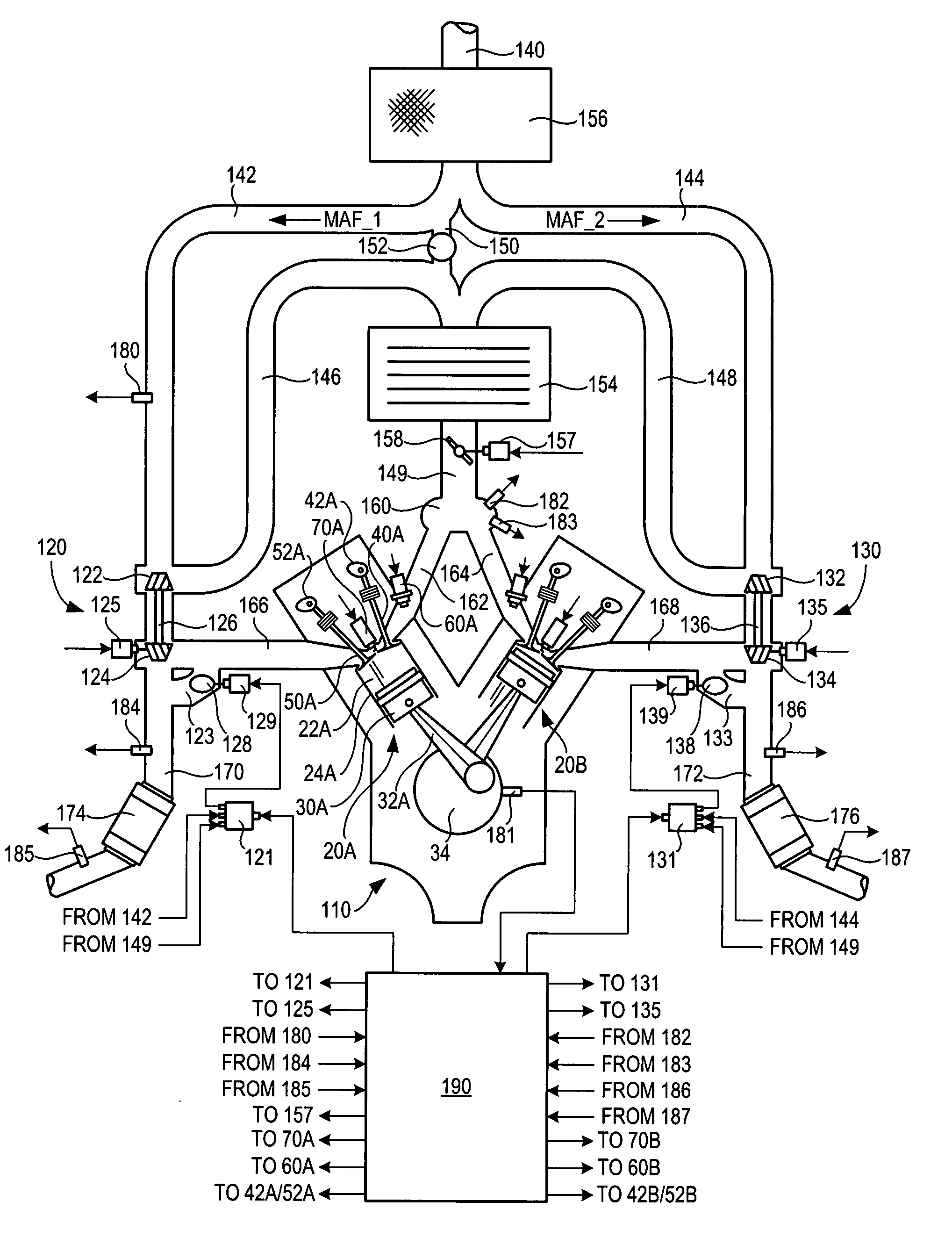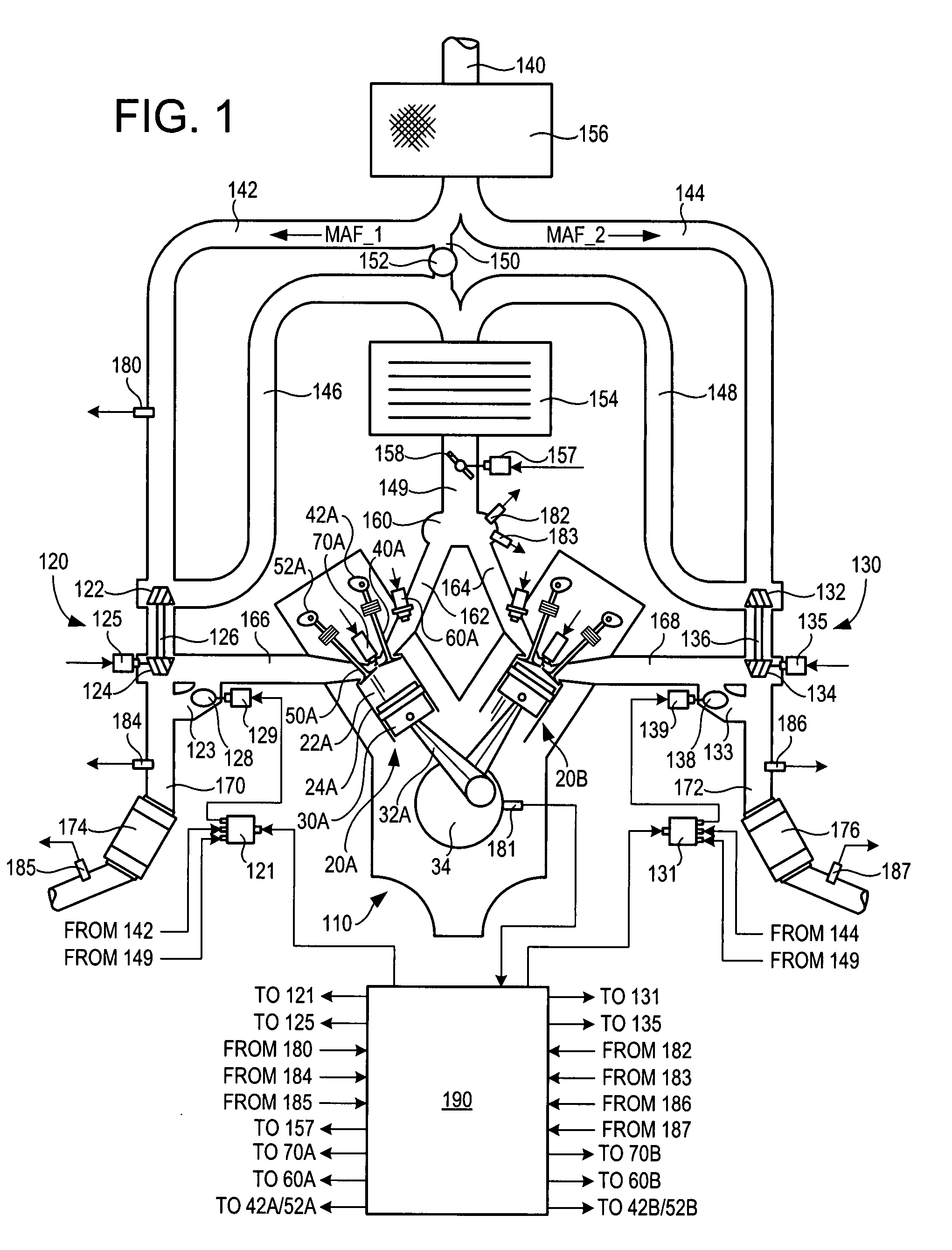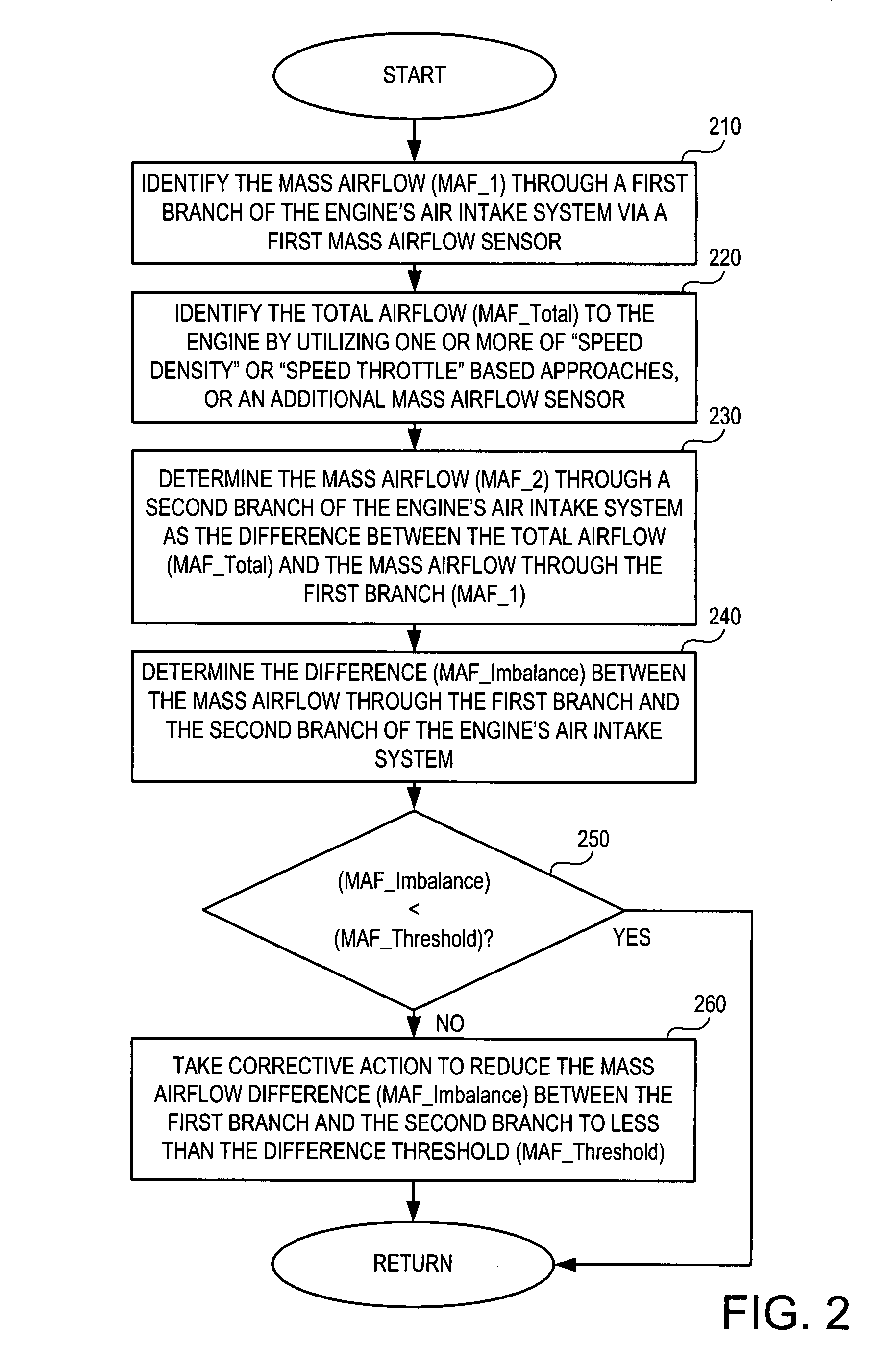Airflow Balance for a Twin Turbocharged Engine System
- Summary
- Abstract
- Description
- Claims
- Application Information
AI Technical Summary
Benefits of technology
Problems solved by technology
Method used
Image
Examples
Embodiment Construction
[0009]FIG. 1 shows a schematic depiction of an example engine system 100 including a multi-cylinder internal combustion engine 110 and twin turbochargers 120 and 130. As one non-limiting example, engine system 100 can be included as part of a propulsion system for a passenger vehicle. Engine system 100 can receive intake air via intake passage 140. Intake passage 140 can include an air filter 156. At least a portion of the intake air (MAF_1) can be directed to a compression device or compressor 122 of turbocharger 120 via a first branch of the intake passage 140 as indicated at 142 and at least a portion of the intake air (MAF_2) can be directed to a compressor 132 of turbocharger 130 via a second branch of the intake passage 140 as indicated at 144.
[0010]A first portion of the total intake air (MAF_1) can be compressed via compressor 122 where it may be supplied to intake manifold 160 via intake air passage 146. Thus, intake passages 142 and 146 form a first branch of the engine's ...
PUM
 Login to View More
Login to View More Abstract
Description
Claims
Application Information
 Login to View More
Login to View More - R&D
- Intellectual Property
- Life Sciences
- Materials
- Tech Scout
- Unparalleled Data Quality
- Higher Quality Content
- 60% Fewer Hallucinations
Browse by: Latest US Patents, China's latest patents, Technical Efficacy Thesaurus, Application Domain, Technology Topic, Popular Technical Reports.
© 2025 PatSnap. All rights reserved.Legal|Privacy policy|Modern Slavery Act Transparency Statement|Sitemap|About US| Contact US: help@patsnap.com



